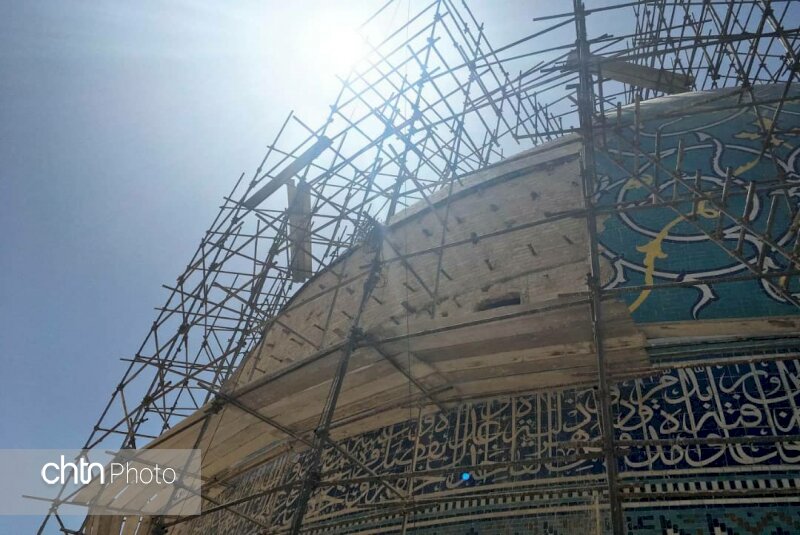Isfahan's Imam Mosque restoration reaches final stage

TEHRAN – The project to restore the dome of Isfahan’s iconic Imam Mosque has entered its final phase, according to Fereydoun Allahyari, head of the provincial department for the Cultural Heritage, Tourism and Handicrafts Ministry.
"Restoration of the historical dome of Imam Mosque, which entailed several stages, including the repair, reconstruction, and substructure of the lower parts, began in 2010 after its tiles went inflated. And now, the reinstallation of the tiles has been commenced on the huge dome," CHTN quoted Allahyari as saying on Thursday.
The official voiced hope the restoration project, which is carried out at a height of 50 meters, comes to an end within the next four months following more than ten years of efforts.
Originally named Masjed Shah (“the Shah Mosque”), the big, grand, and imposing Imam Mosque stands tall at the southern end of the UNESCO-registered Imam (Naghsh-e Jahan) Square. Its construction began in 1611 during the rule of the Safavid King Shah Abbas the Great who reigned from 1588 to 1629. The mosque’s topmost dome was completed in the last year of his sovereignty.
The monument is not only impressive because of its sheer size and incredible decorations but also helps to get a good impression of the needs and challenges of always ongoing restoration works. The craftsmanship continues and is intricate with amazing views both on the façade and the interior. The monument boasts perfect proportions and iconic blue-tiled mosaics.
A very picturesque huge entrance portal welcomes people to the mosque. It is built to face the square though the mosque is oriented towards Mecca. A short corridor connects the square to the inner courtyard that is surrounded by four imposing iwans (porticos) with a pool dedicated to ritual ablutions nesting in the middle. The walls of the courtyard feature sunken porches framed by seven-colored tiles of deep blue and yellow. Each iwan leads into a vaulted sanctuary covered with particularly fine floral motifs on a blue background.
The mosque’s interior and exterior walls are fully covered with a polychrome, mostly dark blue, glazed tile revetment above a continuous marble dado. Throughout the whole mosque, except for the sanctuary dome and portal iwan, Shah ‘Abbas was keen to minimize labor costs and time by introducing a novel technique called “haft-rang” (seven colors).
Isfahan has long been nicknamed as Nesf-e-Jahan which is translated into “half the world”; meaning seeing it is relevant to see the whole world. The city is home to many versatile artisans who underpin its reputation as a living museum of traditional culture.
AFM
Leave a Comment